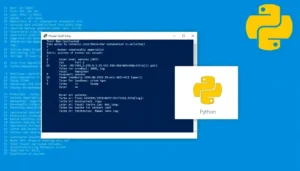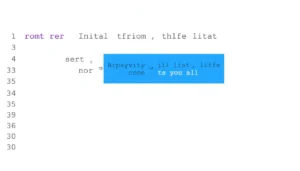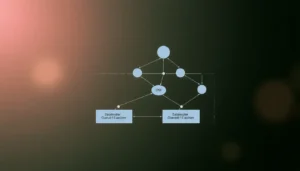Self-Driving Robotaxi Race: Zoox's Vegas Launch and the Future of Autonomous Mobility
- THE MAG POST

- Sep 10
- 6 min read

Self-driving robotaxi design is reshaping urban mobility, blending safety, efficiency, and passenger experience. As Zoox unveils its Las Vegas service, observers watch how autonomous fleets might redefine access, pricing, and city streets. The momentum among tech giants signals more than a transit upgrade; it hints at a broader urban transformation.
Riders anticipate a practical yet elegant shift: quiet operation, seamless app orchestration, and predictable, driverless trips. The promise of a self-driving robotaxi hinges on reliable perception, rigorous safety frameworks, and user-friendly interfaces that invite both casual riders and seasoned travelers to rethink why and how we move through crowded districts.
Launch and the Las Vegas Robotaxi Race Heats Up
Design decisions behind Zoox's cabin
Zoox's cabin is purpose-built for autonomy, lacking a traditional steering wheel and pedals. Instead, interior space is maximized with bench-style seating facing inward, enabling flexible layouts and easy accessibility for passengers and operators. The design emphasizes safety, surveillance, and comfort, balancing compact urban deployment with a roomy passenger experience.
The front and back symmetry allows the vehicle to operate in either direction without costly reconfiguration, simplifying maintenance and routing. Materials, climate control, and noise dampening are tuned for city use, while modular sensor housings integrate cameras, lidar, and radar to sustain robust perception across diverse lighting and weather.
Testing, pilots, and public demonstrations
Public demonstrations during CES and in the Las Vegas corridor showcased fluid navigation, cone weaving, and interaction with the rideshare app. Observers noted the absence of a driver, the calm ride quality, and the vehicle's ability to interpret pedestrian flows, road signs, and lane geometry under real-world traffic.
Riders and press experienced a firsthand glimpse of the road ahead, with Zoox emphasizing accessibility and predictable pickup patterns. The initial rollout will be complimentary, focusing on exposure and data collection to refine routing, scheduling, and incident response before broader expansion to nearby entertainment districts and hotel clusters.
The Vehicle Architecture: A Radical Reimagination of Cabs
Interior layout and control schemes
Inside, passengers face each other on modular benches, creating an intimate yet social atmosphere while keeping aisles wide for boarding and luggage. The absence of a steering column redefines control interactions; information displays and haptic feedback guide riders through pickup, ride status, and emergency assistance without distracting controls.
Control systems are centralized in a compact suite, coordinating navigation, safety monitoring, and user assistance. The architecture prioritizes fault tolerance and privacy, with encrypted communications between vehicle, rider apps, and fleet management to minimize latency and ensure consistent service even during network interruptions.
Sensors, compute, and safety layers
Zoox relies on a layered stack of sensors, fusion algorithms, and edge compute to maintain situational awareness. Redundant perception, cross-checking between cameras, lidar, and radar, plus high-definition maps, helps the car respond to dynamic environments—especially in busy casino corridors and multi-level car parks.
Safety overlays include automated braking, geofencing, and anomaly detection that triggers human oversight if needed. The regulatory body's feedback loops are mirrored in the on-vehicle dashboards and operator consoles, ensuring a transparent, auditable mode of operation while prioritizing passenger comfort and minimal disruption to pedestrians.
Rider Experience and Safety: How It Feels in a Driverless Cabin
From pickup to drop-off: the user journey
Booking a ride is anchored to a familiar app flow: tap, confirm, and watch as the ETA updates in real time. The vehicle arrives in a dedicated lane, doors swing open, and seating arrangements guide you to your seat. The ride then proceeds with minimal, predictable acceleration and braking.
Onboard assistants explain the route, and in-app support remains reachable during the trip. Quiet cabins and stable acceleration reduce motion sickness, while ambient lighting and climate control adapt to passenger mood and weather, creating a calm, confidence-building environment for first-time and regular users alike.
Safety protocols and risk management in autonomous fleets
Zoox implements multi-layer safety protocols: redundancy in sensors, fail-safe software, and proactive incident response. In the event of uncertain perception, the system slows or reroutes, while human operators can intervene remotely. Public-facing safety information builds trust, including clear explanations of how and when a vehicle might stop.
Insurance models and city permits evolve in parallel with the hardware. Fleet managers collect performance metrics to improve gradual deployment, share anonymized data with regulators, and refine risk models. The overall approach aims to minimize sudden trips, maximize reliability, and ensure equitable access across different neighborhoods.
Industry Competition and Strategic Moves
Competitive landscape and Zoox's positioning
The autonomous mobility arena features several heavyweights—Waymo, Tesla, Uber, and newer entrants—each contesting routes, data, and fleet economics. Zoox positions itself with a purpose-built robotaxi, unique interior design, and an early Las Vegas foothold, leveraging partnerships and data-driven iterations to gain regulatory patience and user acceptance.
Beyond hardware, Zoox's software stack and fleet-management strategies aim to optimize utilization and maintenance costs. By showing controlled, high-visibility deployments, the company tests consumer willingness to pay for safety guarantees, service reliability, and predictable scheduling in dense urban locales.
self-driving robotaxi standards and competitive dynamics
self-driving robotaxi standards are still evolving, requiring clearer safety benchmarks, liability rules, and interoperability across platforms. The competitive dynamics hinge on data access, sensor performance, and regulatory cooperation, with Zoox and peers racing to demonstrate consistent performance in varied urban settings.
Industry collaborations could accelerate progress: data-sharing accords, joint testing corridors, and harmonized incident reporting. As fleets scale, cost reductions from modular manufacturing and software upgrades will decide which model—a highly customized robotaxi or a more conservative approach—dominates city streets first.
From Vegas to the World: Expansion Plans and City Deployments
Plans for San Francisco, Austin, and Miami
Expansion targets include San Francisco, Austin, and Miami, each presenting distinct regulatory landscapes and terrain challenges. Zoox plans phased rollouts with localized safety demonstrations, community outreach, and alignment with municipal transportation goals, allowing for smoother permitting and acceptance by residents and workers.
City pilots will inform maintenance, pricing, and surge-management practices, ensuring that the service adapts to tourism flows, peak event times, and weather variability. Partnerships with local venues and transit agencies could extend service footprints while preserving accessibility and open data to regulators.
Regulatory, insurance, and municipal implications
Regulatory engagement focuses on safety verification, data sovereignty, and urban integration, with insurers watching claims patterns and accident rates. Transparent reporting helps regulators judge risk, while insurers adjust premiums to reflect actual fleet performance and exposure in real-market trials.
Municipal concerns include curb management, equity of access, and emergency-response readiness. By coordinating with city planners and transit operators, Zoox can help shape policies that balance innovation with pedestrian protection, better last-mile options, and resilient transportation networks during major events.
Self-Driving Robotaxi: Key Takeaways for the Road Ahead
Technological Milestones and Limitations
Technological milestones include robust perception in mixed lighting and dense traffic, reliable route planning, and resilient fail-safes in offline or degraded network states. The most significant limitations now revolve around edge-case handling, pedestrian unpredictability, and the need for scalable, cost-efficient maintenance across sprawling urban fleets.
Continued advances in sensor fusion, map accuracy, and ML-driven decision-making will progressively close these gaps. The path to reliable mass deployment requires rigorous validation, clear standards, and continuous feedback from pilots to production, ensuring safety remains central while expanding service coverage and affordability.
Strategic Implications for Cities and Consumers
Cities stand to gain safer roads, reduced congestion, and new mobility options if deployment aligns with land-use planning and transit integration. For consumers, predictability, accessibility, and transparent pricing become the core value propositions, with autonomous fleets complementing existing transit rather than replacing it wholesale.
Pricing strategies, accessibility for underserved neighborhoods, and emergency-response protocols will shape adoption. As urban areas become testbeds for autonomous mobility, policy designers will weigh risk, cost, and social impact, guiding a path where technology amplifies inclusion and urban livability without displacing local businesses or workers.
Topic | Summary |
Zoox Las Vegas launch | Zoox debuts a self-driving robotaxi service in Las Vegas, challenging rivals like Waymo and Uber with a purpose-built vehicle. |
Vehicle design | Unique interior with benches and no steering wheel to maximize space and passenger comfort. |
User experience | App-based pickup, live ETA updates, and in-vehicle support for a seamless rider journey. |
Industry competition | Rivals like Waymo and Uber race to deploy fleets, forging partnerships and data-driven strategies. |
Expansion plans | Targets San Francisco, Austin, and Miami with phased deployments and regulatory coordination. |
Key takeaways | Technology milestones, safety imperatives, and urban impact considerations for riders and cities. |






















































Comments